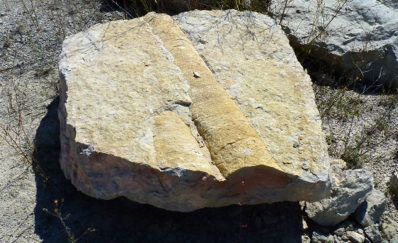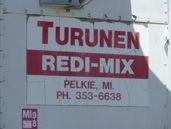Orthocones
2012
The lower peninsula of Michigan is mainly underlain by marine deposits of Paleozoic age, which contain many diverse fossils. In the western UP the Paleozoic covering of older rocks is almost completely removed by erosion. There are a few remnants of these rocks near Pelkie, only 20 miles S of Houghton. One of these sites, called Sherman Hill, is the site of an active limestone quarry. The operators have saved boulders that contain spectacular giant cephalopod fossils. We think these fossils are from the Endoceratidae, a family of large to very large straight shelled nautiloid cephalopods belonging to the order Endocerida that lived during the Middle and Late Ordovician. They include the largest known Paleozoic invertebrates, represented by Endoceras and Cameroceras. These fossil creatures are closely related to squids and carried long, chambered shells, which helped them move quickly through Cambrian, Ordovician and Silurian seas which covered the Keweenaw from 400-540 million years ago.
We have moved the best of these fossils to near the entrance of the Great Lakes Research Center, so that more people can see them.
Orthocones
Stats
name Orthocones
location Houghton, MI
KML download here
subjects Cephalopods, Ordovician




BBC

